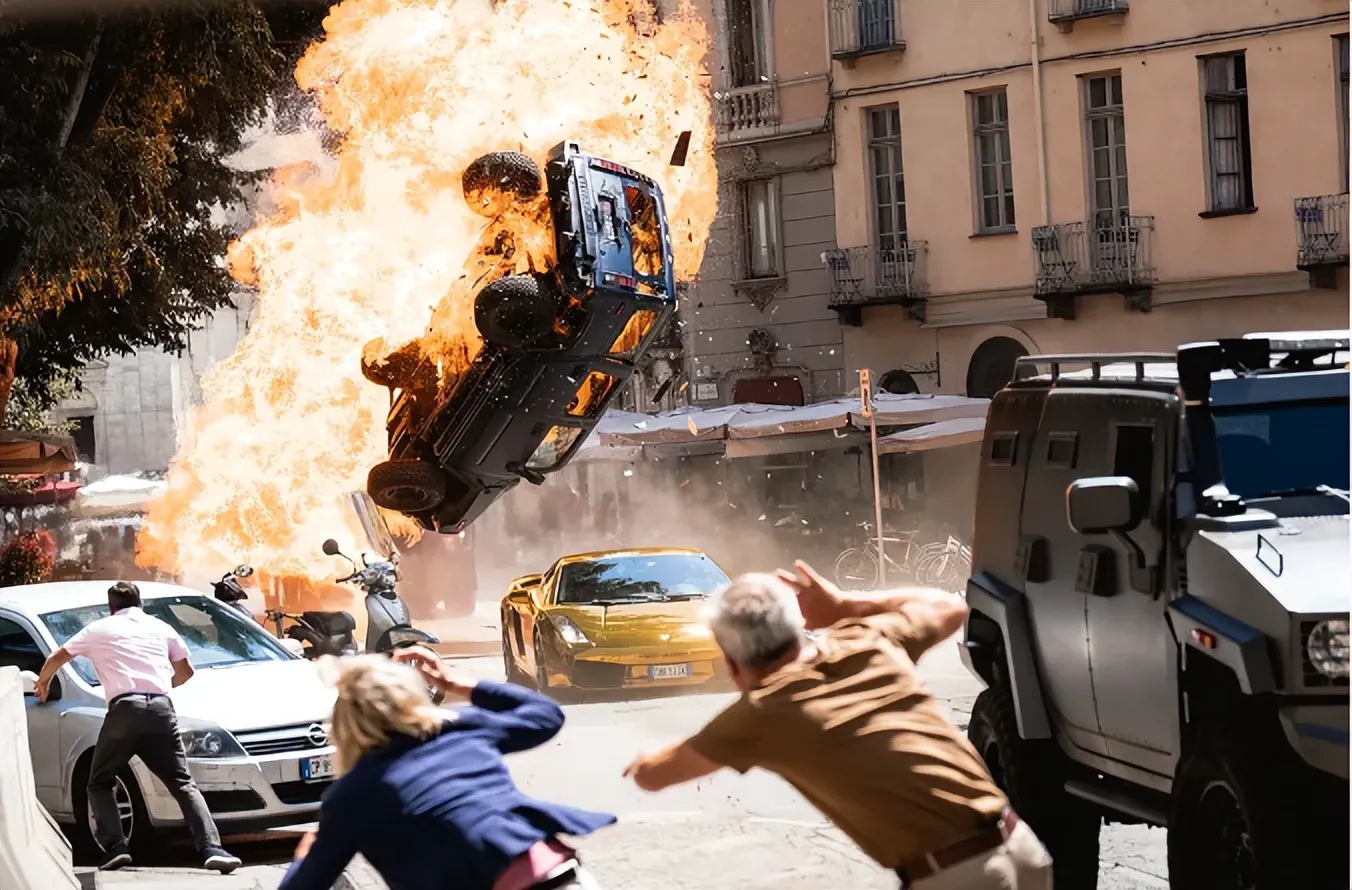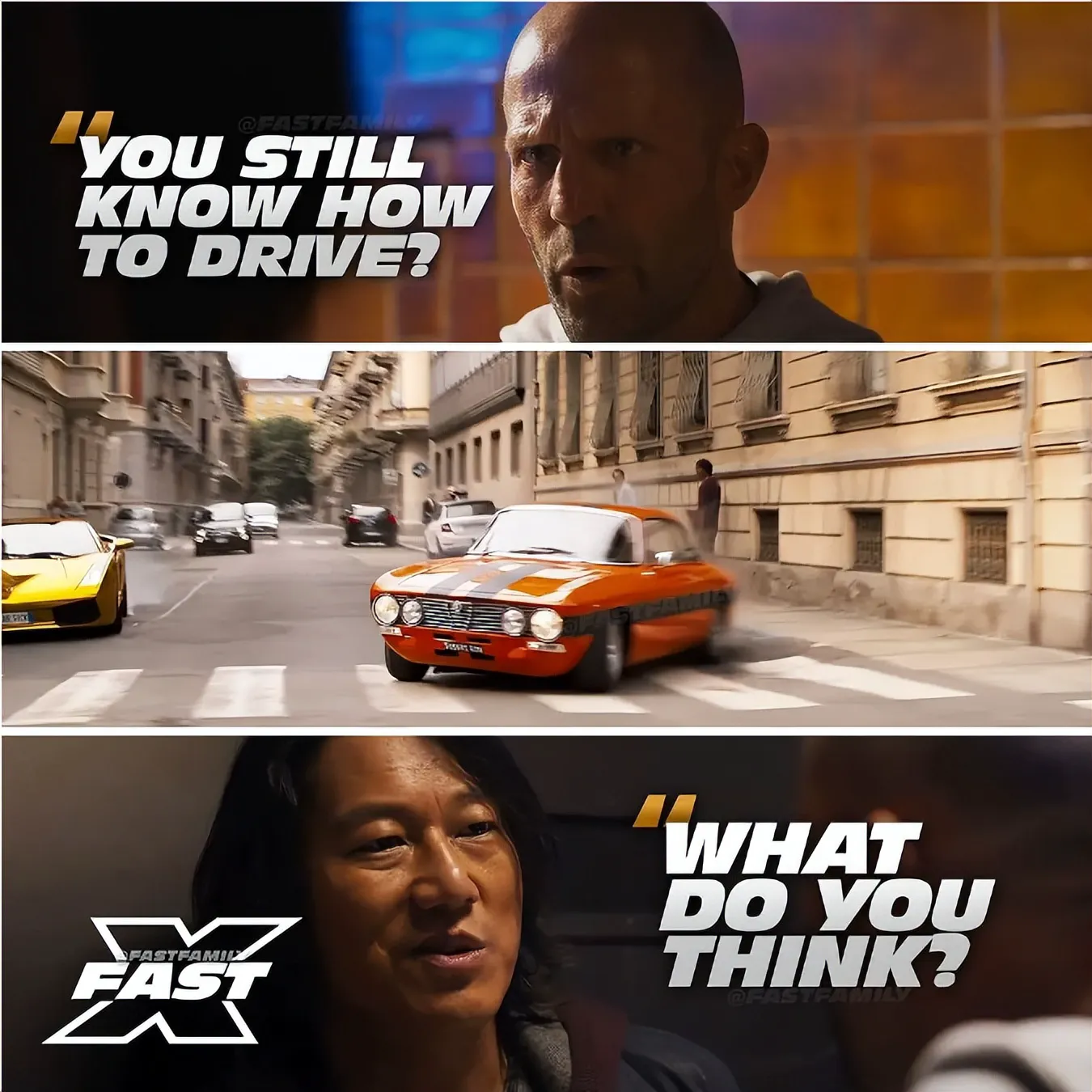In “F9: The Fast Saga,” released two years ago, a group of people drove cars into space – an absurd idea that broke the limits of physics and almost completely sent the series into a black hole. Surprisingly, at the end of aesthetic fatigue, “Fast X” has once again appeared in a high profile amidst the roar. Vin Diesel revealed in an interview at the world premiere that the “Fast & Furious” series finale may become a trilogy. This latest sequel did not continue to speed on the story black hole of the previous film, but instead delved into the details of the previous work, and forcibly carved out a new trilogy path.

Revisiting the Past
The film opens by revisiting the climax scene of “Fast Five” in 2011 - O’Connor and Dominic dragged a bank vault out of the Rio de Janeiro police station. The money inside belonged to the corrupt politician Reyes, who died tragically after the battle on the bridge. Now, “Fast X” tells us that Reyes had a son who always stood outside the camera - an antisocial rich kid named Dante, who wants to avenge the muscle men who killed his father.
The Villain: Dante
Jason Momoa, “Aquaman” himself, plays this bizarre villain, and clearly enjoys the freedom of breaking away from the superhero image. He flaunts himself unscrupulously, strides forward, laughs wildly, and even paints the corpses’ nails. Vin Diesel’s Dominic, is Dante’s target for revenge. Dominic is a very family-oriented man, and his family is his “weakness”, and Dante wants him to taste the feeling of losing his family.

A Familiar Formula
This is a revenge story that has been filmed countless times by Hollywood. The plot does not have the slightest room for turning, and the whole film has irreversibly become a bloated soap opera after forcibly gluing together several incredible big scenes. So, how does it support the length of more than two hours? Constantly emerging supporting roles and mysterious plot fragments are stirred together with unrestrained. People who have been separated for many years appear and disappear again, dead characters come back to life, characters run around the world, fights are inevitable when they meet, and the change of positions between good and evil is like a child’s play. All the gaps left by all this are handed over to the next two sequels.
Star-Studded Cast
The cast of “Fast X” is almost luxurious. In addition to a group of action stars we are familiar with, four Oscar-winning actresses were invited to perform awkwardly. Charlize Theron, who was ruthless in the first two films, admits defeat first and then gets beaten; Brie Larson’s role is a big “inexplicable”, and it is even more difficult for us to see why Rita Moreno and Helen Mirren are needed to play the indomitable female heads of the family. The serious waste of resources has exacerbated the film’s exaggeration and boredom.

The Villain Steals the Show
Come to think of it, the only complete character in the whole film is the villain Dante. Although Momoa’s performance is extremely stylized, at least you can see a bit of the shadow of “Joker”, or the charm of Captain Jack of “Pirates of the Caribbean”. Dante is keen on planning explosions, and then stands on a high place like a savior, opening his arms to welcome the scene of destruction. When he is not there, the rhythm of the film begins to lag.
In comparison, the protagonist’s setting is even more pale. “Family” has been locked by the director as the core of the film’s story, but he has been using the most plain and unnutritious dialogue to emphasize the importance of blood relationship. Dominic must protect his family at all costs, but he actually entrusts his 8-year-old son to others to take care of, just because he is going to participate in a racing competition in Rio.

Spectacle and Excess
Finally, let’s go back to the only selling point of “Fast X” - after wasting 340 million US dollars in production costs, the film does contribute enough spectacular special effects scenes. The first half of the film presents a climax too early - Dante throws a huge marble bomb in Rome, and the bomb rolls wildly in the city, almost flattening everything. This scene is so simple and rude, but it is smooth and pleasant. In the climax scenes such as helicopters pulling the protagonist’s car and cars flying off the dam, the director challenges the laws of physics time and time again, and once again exaggerates and distorts the lens to bring the housekeeping skills of the “Fast & Furious” series to the extreme.

The easter egg at the end of the film points out the direction of the next sequel story. Judging from its lazy and opportunistic logical setting, the “Fast & Furious” series can be filmed to 20 films with ease. Of course, the new trilogy officially launched from “Fast X” does not expect to return to its former peak in terms of story creativity. It is just a behemoth project that continues to be made for loyal fans. For unenterprising popcorn movies, all demands are easy to become a joke.